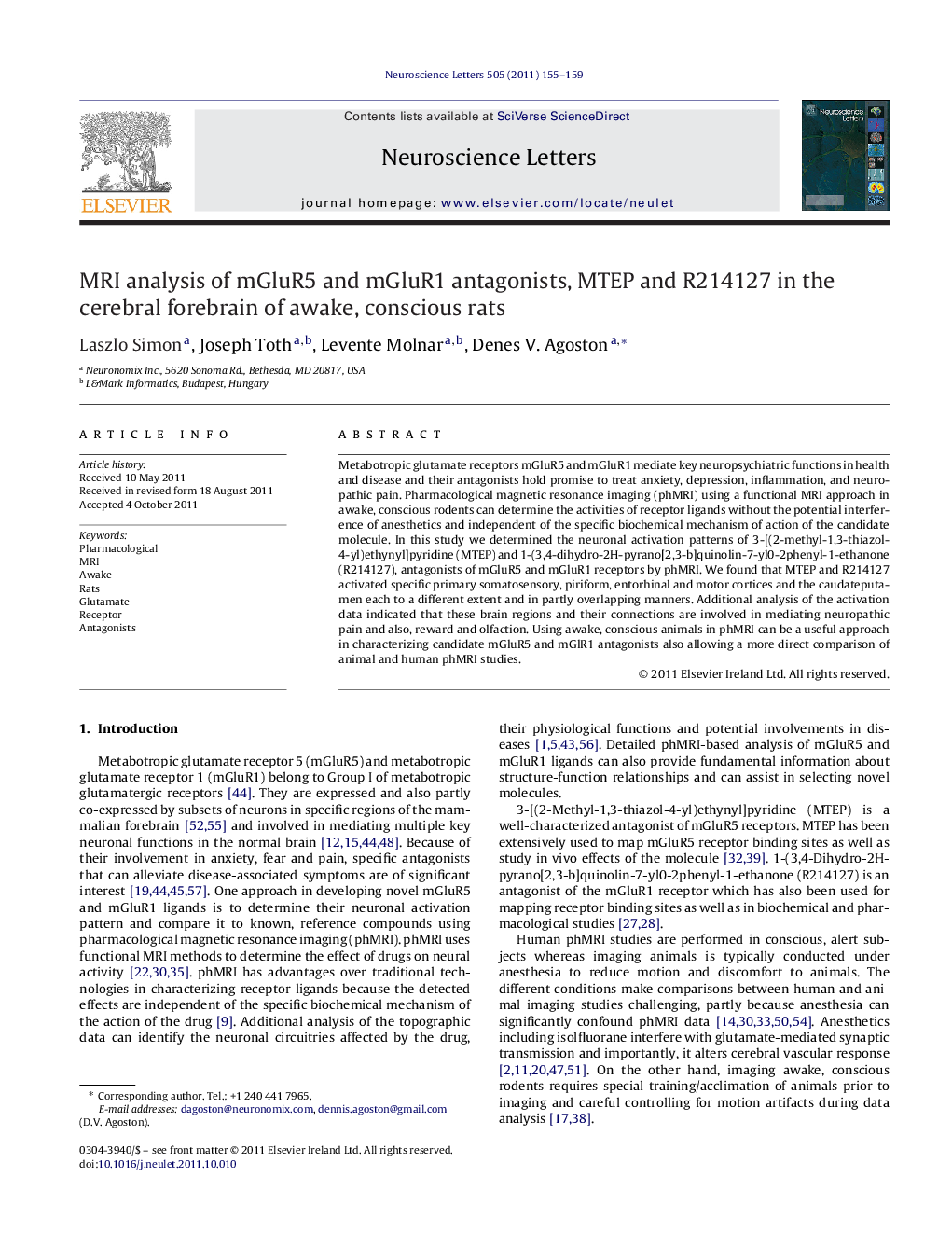| Article ID | Journal | Published Year | Pages | File Type |
|---|---|---|---|---|
| 6284518 | Neuroscience Letters | 2011 | 5 Pages |
Metabotropic glutamate receptors mGluR5 and mGluR1 mediate key neuropsychiatric functions in health and disease and their antagonists hold promise to treat anxiety, depression, inflammation, and neuropathic pain. Pharmacological magnetic resonance imaging (phMRI) using a functional MRI approach in awake, conscious rodents can determine the activities of receptor ligands without the potential interference of anesthetics and independent of the specific biochemical mechanism of action of the candidate molecule. In this study we determined the neuronal activation patterns of 3-[(2-methyl-1,3-thiazol-4-yl)ethynyl]pyridine (MTEP) and 1-(3,4-dihydro-2H-pyrano[2,3-b]quinolin-7-yl0-2phenyl-1-ethanone (R214127), antagonists of mGluR5 and mGluR1 receptors by phMRI. We found that MTEP and R214127 activated specific primary somatosensory, piriform, entorhinal and motor cortices and the caudateputamen each to a different extent and in partly overlapping manners. Additional analysis of the activation data indicated that these brain regions and their connections are involved in mediating neuropathic pain and also, reward and olfaction. Using awake, conscious animals in phMRI can be a useful approach in characterizing candidate mGluR5 and mGlR1 antagonists also allowing a more direct comparison of animal and human phMRI studies.
⺠Activation pattern of MTEP and R214127 in awake, conscious rats determined by pharmacological MRI. ⺠MTEP and R214127 activate specific brain regions in partly overlapping manner. ⺠Activated brain regions involved in mediating olfaction, reward and pain. ⺠Approach can be used for characterizing novel mGluR5 and mGluR1 antagonists. ⺠phMRI using awake, conscious rats helps to compare animal and human MRI studies.
